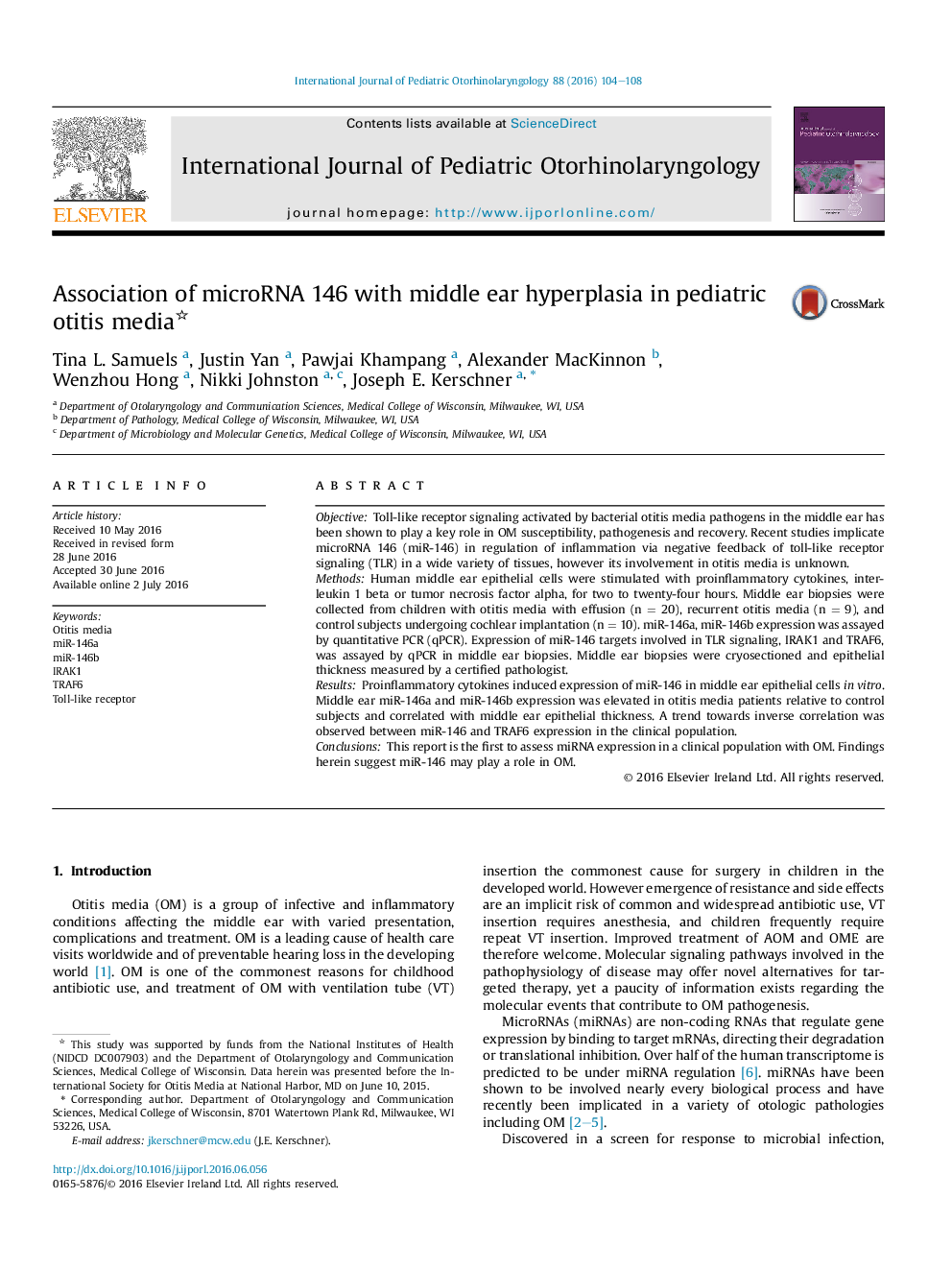| Article ID | Journal | Published Year | Pages | File Type |
|---|---|---|---|---|
| 4111396 | International Journal of Pediatric Otorhinolaryngology | 2016 | 5 Pages |
ObjectiveToll-like receptor signaling activated by bacterial otitis media pathogens in the middle ear has been shown to play a key role in OM susceptibility, pathogenesis and recovery. Recent studies implicate microRNA 146 (miR-146) in regulation of inflammation via negative feedback of toll-like receptor signaling (TLR) in a wide variety of tissues, however its involvement in otitis media is unknown.MethodsHuman middle ear epithelial cells were stimulated with proinflammatory cytokines, interleukin 1 beta or tumor necrosis factor alpha, for two to twenty-four hours. Middle ear biopsies were collected from children with otitis media with effusion (n = 20), recurrent otitis media (n = 9), and control subjects undergoing cochlear implantation (n = 10). miR-146a, miR-146b expression was assayed by quantitative PCR (qPCR). Expression of miR-146 targets involved in TLR signaling, IRAK1 and TRAF6, was assayed by qPCR in middle ear biopsies. Middle ear biopsies were cryosectioned and epithelial thickness measured by a certified pathologist.ResultsProinflammatory cytokines induced expression of miR-146 in middle ear epithelial cells in vitro. Middle ear miR-146a and miR-146b expression was elevated in otitis media patients relative to control subjects and correlated with middle ear epithelial thickness. A trend towards inverse correlation was observed between miR-146 and TRAF6 expression in the clinical population.ConclusionsThis report is the first to assess miRNA expression in a clinical population with OM. Findings herein suggest miR-146 may play a role in OM.
